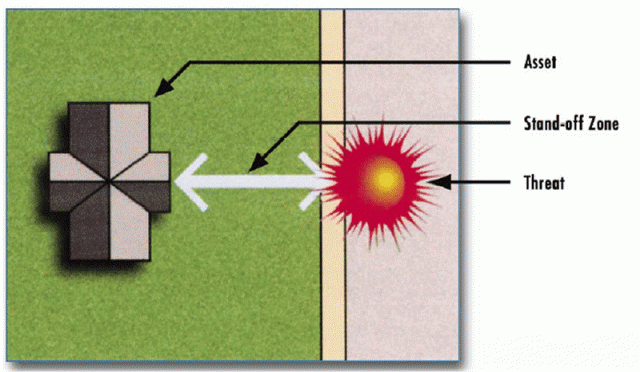If you begin discussing government facilities security, sooner or later “standoff” will enter the conversation. Standoff, sometimes used synonymously with “setback”, is the term used to describe the distance between a building and the perimeter of its site. In high security facilities such as FBI field offices it is typical to require 100 feet of standoff. Other facilities may require less – 50 feet or just 20 feet. Conversely, the most secure facilities may require 300 or 500 feet of standoff.
What is the primary purpose of standoff? Blast protection. The further the building from the potential source of an explosive device, the better protected it will be. This concept was underscored by the Murrah Building bombing in Oklahoma City in April 1995. Timothy McVeigh and his accomplice Terry Nichols were able to park a Ryder truck filled with explosive material just 15 feet from the face of the Murrah Building. The resulting blast force caused one-third of the structure to collapse, resulting in the loss of 168 lives.
The best protection against an explosive force is distance because a blast wave dissipates logarithmically as it travels from the source of the explosion. Doubling the standoff distance reduces the blast force eight times.

